The HailTrace Hurricane Forecast 2025
HailTrace CEO Derik Kline recently shared his predictions for the 2025 Hurricane Season, covering not only the science behind tropical weather but also laying out his picks for total named storms and where they may form.
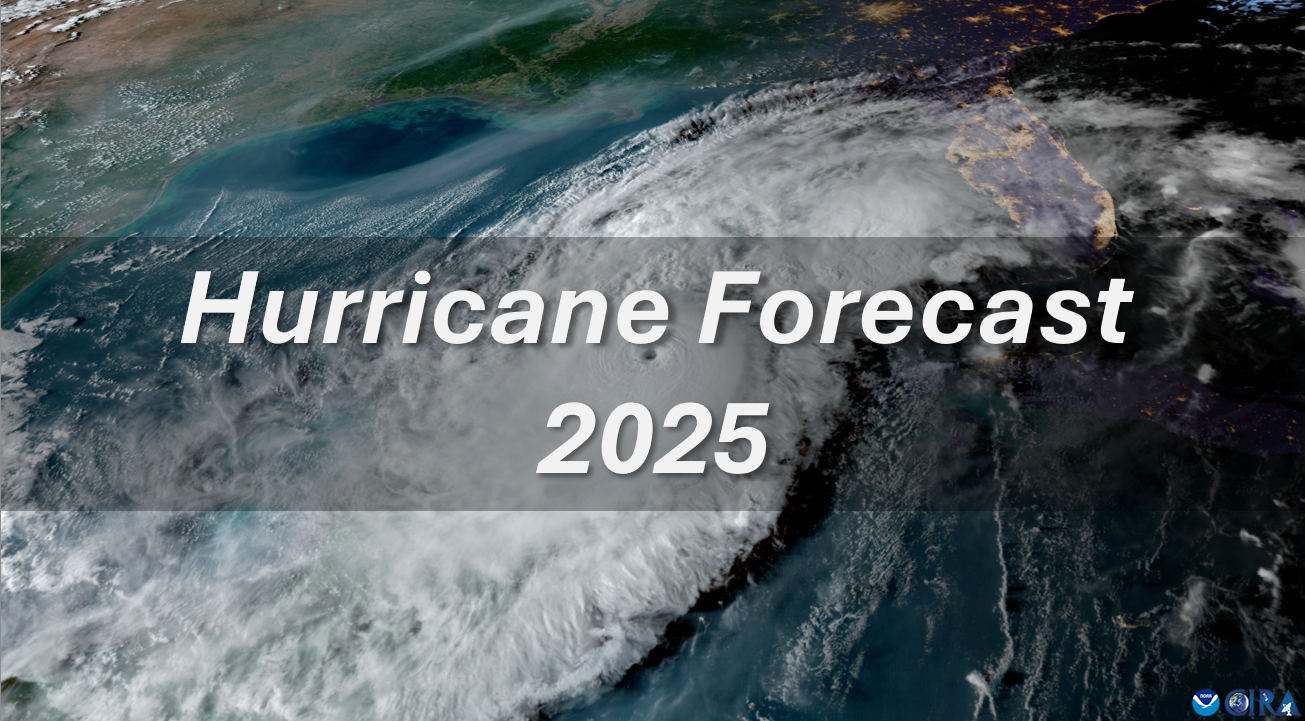
HailTrace's Meteorologist Taylor Cox and Podcast Co-Host Collin Hunt recently sat down with CEO Derik Kline to map the trajectory of the 2025 Atlantic Hurricane Season, with Derik offering his insights on what the tropical season may have in store. Derik's full interview is available on HailTrace's YouTube page, but let's hit the highlights of what the Head HailStalker is expecting for 2025.
"A Fairly Active Season"
The 2024 Hurricane Season saw 18 named storms, four of which reached Category 3 or greater. Five of those tropical cyclones--Beryl, Debby, Francine, Helene, and Milton--made US landfall as hurricanes between June 28th and October 10th.
Hurricane Helene certainly stood out last year for the sheer damage it brought as it progressed from Florida all the way up to Ohio. Meanwhile, Milton made headlines for the number of tornadoes it spawned across the Florida peninsula. Although these two were the standouts of the season, all five landfalling hurricanes approached the US from the Gulf, which, along with the Caribbean, was the hotspot for tropical activity last year.
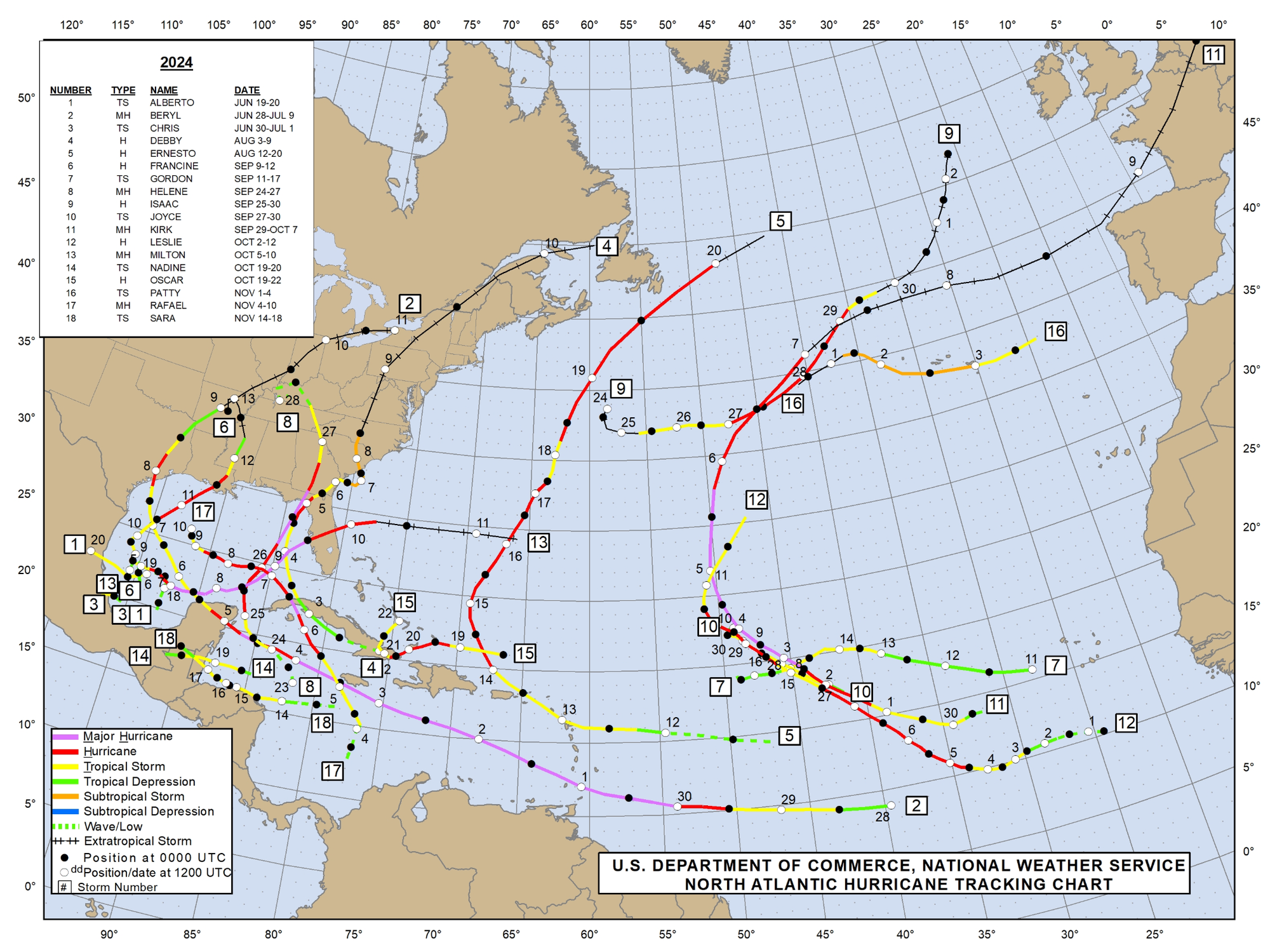
"Not a Lot Going on Out There Right Now"
The 2025 Hurricane Season has had a marginally slower start than 2024, with the first named storm developing on June 24th. In total, three total tropical storms have occurred so far, which is on pace with last season around this time. However, 2025 has yet to see its first hurricane.
By this time last year, we had already seen Hurricane Beryl, only the second named storm of 2024, achieve hurricane status on June 29th, then becoming a Category 5 storm over the following days. Considering 2024's more aggressive start to the season, the 2025 season is certainly behind pace in terms of tropical intensity.
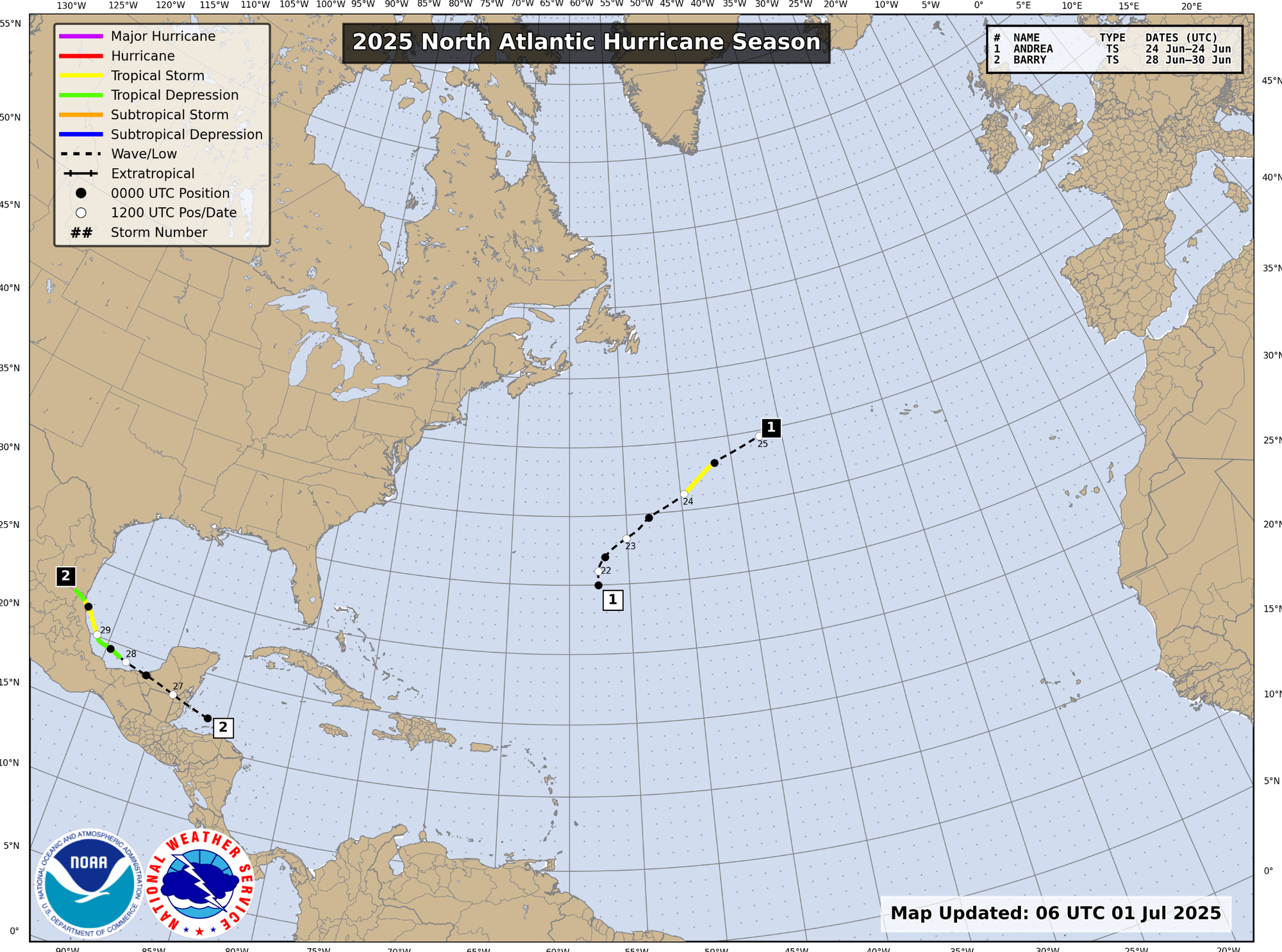
Of course June and July are hardly the peak of hurricane season. Based on historical climatology, tropical activity peaks around early- to mid-September, so the 2025 season has only just begun.

"Not a Perfect Rule. . . Just a Good Rule of Thumb"
In his interview, Derik outlined a variety of meteorological and climatological factors that help determine the intensity of any hurricane season. Specifically, he mentioned the ENSO phase, sea surface temperatures, and average wind shear over the Caribbean and the Gulf.
Wind shear depends in part on the ENSO cycle, which is a rotation of three sets of climate conditions: El Nino, La Nina, and ENSO Neutral. The ideal conditions for a strong hurricane season accompany a La Nina phase, which generally leads to weaker wind shear over the tropics. The primary role of this weaker wind shear is to make it easier for tropical cyclones to remain organized and intensify.
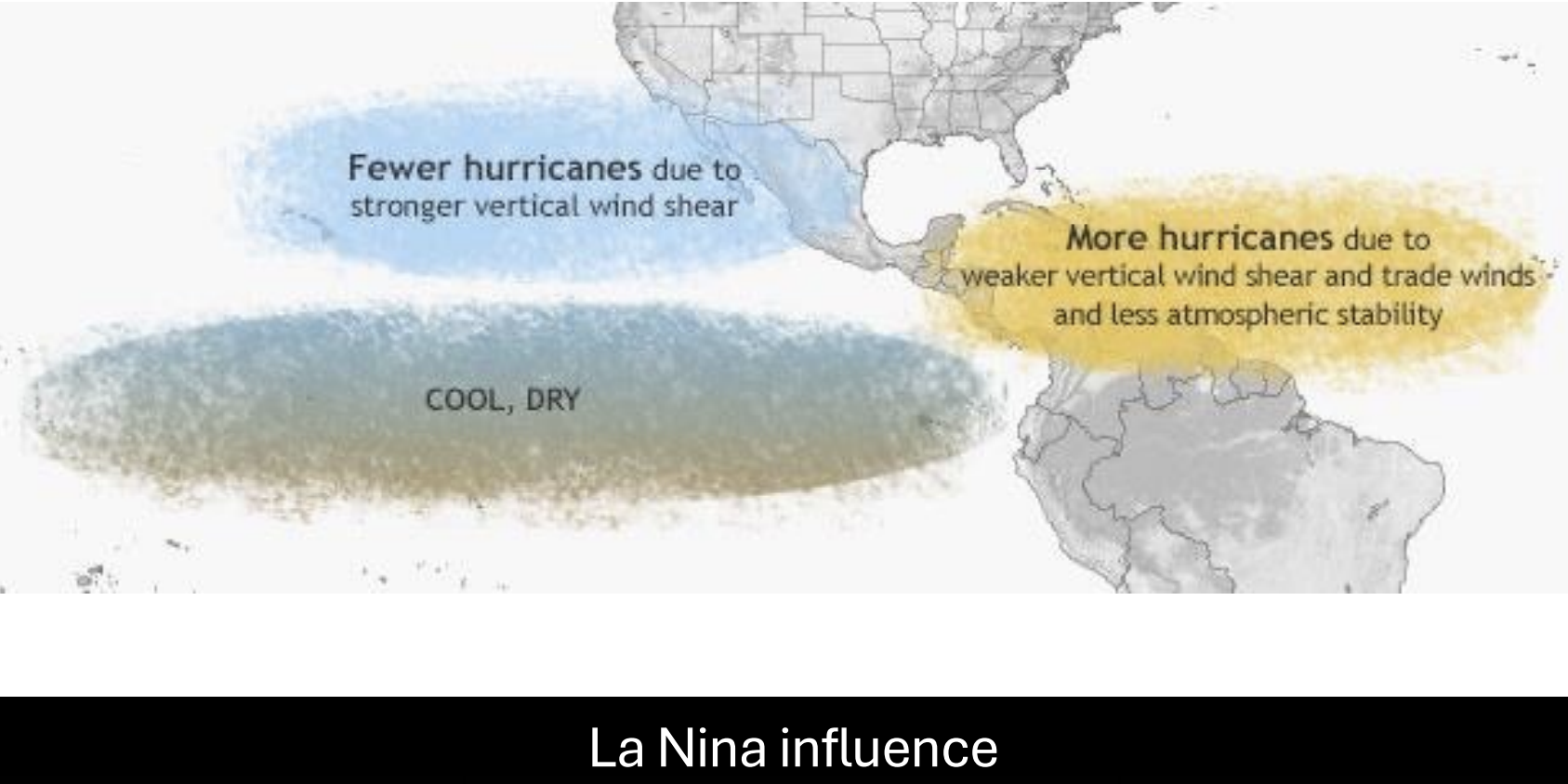
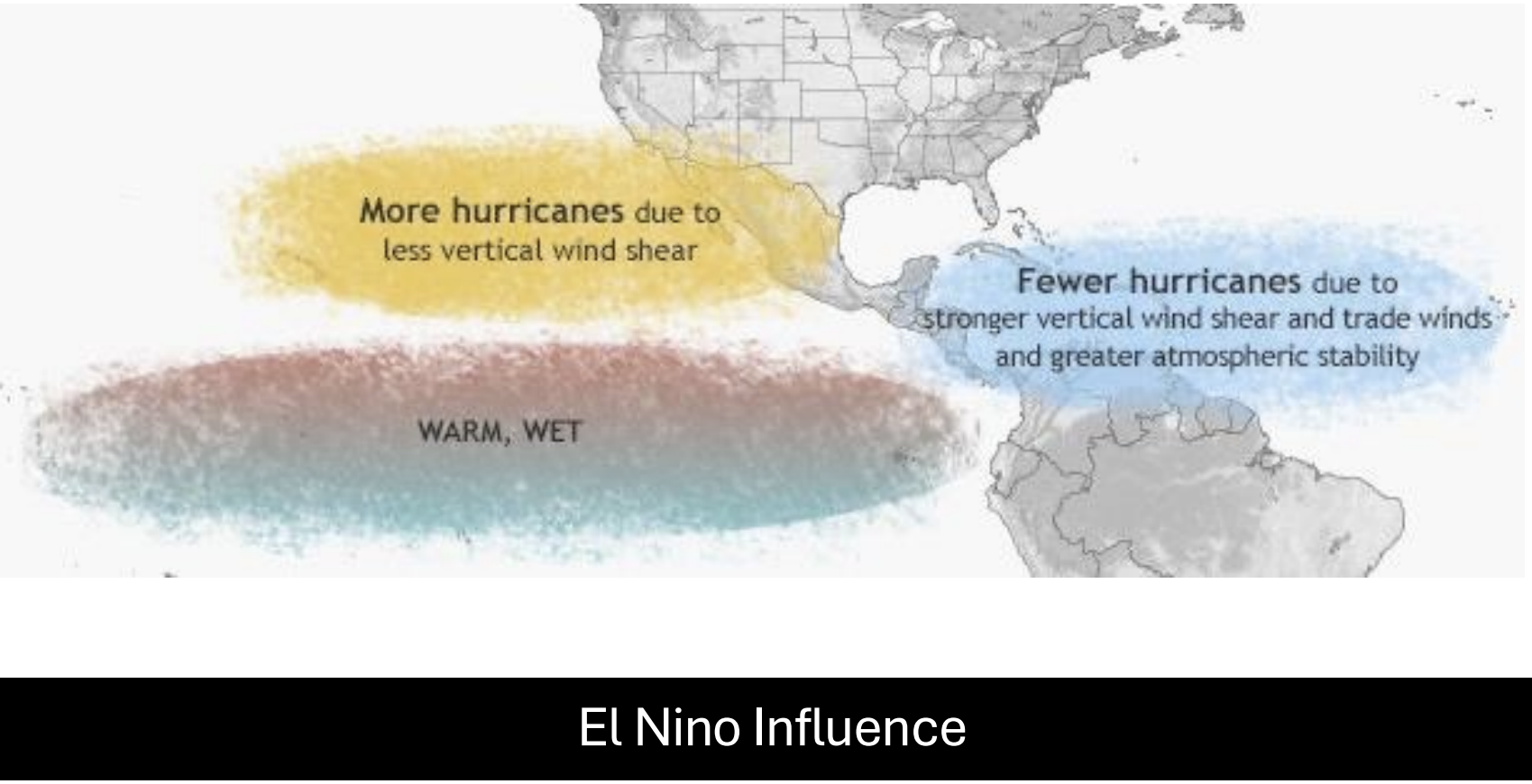
El Nino VS La Nina
"Most of the time, the rule applies: El Niño brings below-average hurricane seasons, La Niña brings above-average. But 2022 and 2023? Total outliers."
The other variable is sea surface temperature, with warmer temperatures in the tropics providing the instability necessary for tropical storms to develop.
Going into the remainder of the 2025 season, long-term expectations are for ENSO phase to potentially exit an ENSO Neutral phase and enter a La Nina phase, bringing a decrease in wind shear. With sea surface temperatures currently above average in the northern Gulf and the northern Atlantic, conditions are potentially favorable for tropical activity later in the season.
"This Is the Plan"
Derik forecasted a fairly average to slightly above-average hurricane season. With a forecast of 12-17 named storms in 2025, this hurricane season would rank just behind last year. Nonetheless, a potential for 6-10 hurricanes, 2-3 of which could be major hurricanes, would keep the 2025 season well on pace with historical averages.

In terms of landfalling hurricanes, Derik offered his shortlist of areas to watch this hurricane season:
- North Carolina;
- Louisiana;
- Southeastern Florida;
- Texas.
Time will tell where and when any tropical cyclones may develop. But one thing is sure: the 2025 Hurricane Season has only just begun.
HailTrace's team of meteorologists will be monitoring the tropics and tracking every storm that develops. For more information on HailTrace and the range of products we offer, visit our website HailTrace.com.
To watch the full video interview with Derik Kline, check out our YouTube page.

